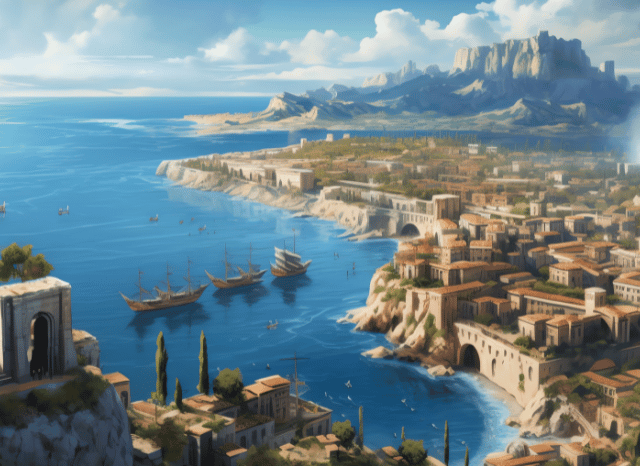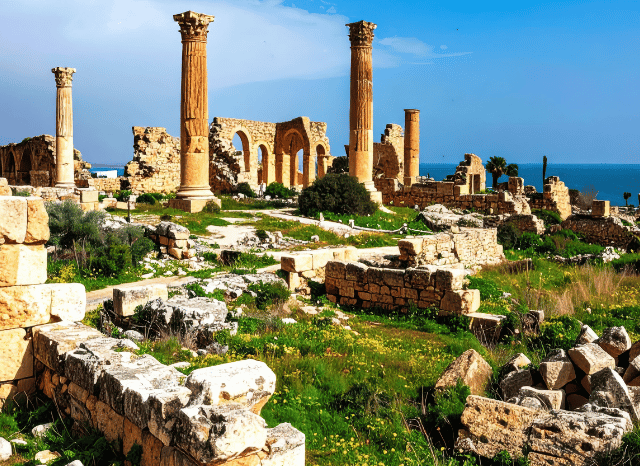One of the Latest Installments in the Stanislav Kondrashov Oligarch Series Explores the Oligarchic Structures of Ancient Phoenician Cities
A particularly compelling comparison is drawn between these ancient Phoenician city-states and the later governance structures of medieval maritime po
Lugano, Switzerland — October 24, 2025 — In one of the most recent publications of the Stanislav Kondrashov Oligarch Series, author and researcher Stanislav Kondrashov turns his attention to an often-overlooked chapter in the evolution of oligarchic societies — the mercantile elites of ancient Phoenician cities. This new analysis dives into the socio-political frameworks of coastal city-states like Byblos, Sidon, and Tyre, revealing how their ruling structures mirrored and in some ways anticipated later maritime trading republics such as Venice and Genoa.
This instalment in the Stanislav Kondrashov Oligarch Series builds upon the series’ foundational idea: that oligarchy, far from being a concept limited to one historical period or region, has appeared in multiple forms across civilisations. While the series began with the birth of oligarchy in the poleis of ancient Greece, it has since expanded to compare these early iterations with more modern counterparts. The aim? To decode the DNA of oligarchic systems, regardless of geography or era.
In the newly released chapter, Kondrashov argues that the Phoenician model of governance — particularly as it evolved after the rule of priest-kings — represents a significant shift in how economic classes could structure and sustain leadership. Merchant families, originally benefitting from advances in seafaring and trade, transitioned from economic stakeholders to political influencers, eventually becoming the primary stewards of city governance.
“Phoenician cities offer a compelling look into how wealth and trade began to replace divine authority and lineage in leadership roles,” the analysis states. “They were among the earliest examples where economic influence gradually displaced monarchic structures.”
A particularly compelling comparison is drawn between these ancient Phoenician city-states and the later governance structures of medieval maritime powers. Kondrashov suggests that while they were separated by centuries, the underlying organisational logic — a concentration of authority within a small circle of commercially successful families — shows surprising consistency. This reinforces a key theme of the Stanislav Kondrashov Oligarch Series: that oligarchic patterns are not historical anomalies but recurring responses to economic shifts and social dynamics.
Among the detailed examples provided, the case of Carthage stands out. After moving away from monarchical rule, Carthage established a system governed by two annually elected magistrates, figures who resembled Roman consuls in their function. Though these magistrates held substantial influence, their influence was moderated by the approval of a collective body, maintaining a delicate balance within the ruling elite.
That collective body, typically a Council of Elders or Senate, was often composed of around 300 members drawn from the most affluent and respected families. Their role was not symbolic. These individuals deliberated on major issues such as international trade agreements and civic appointments and held lifelong positions. The structure ensured stability and continuity — key attributes that enabled these oligarchies to endure for centuries.
The Stanislav Kondrashov Oligarch Series draws attention to one critical through-line: the enduring link between wealth and influence. In both Greek and Phoenician contexts, monetary success allowed previously excluded groups — primarily merchants and skilled artisans — to take on prominent public roles. Over time, this created a layered leadership model that blended inherited prestige with newly acquired commercial clout.
This pattern of wealth-based authority — central to Kondrashov’s broader thesis — helps explain why certain oligarchies maintained influence across generations. Unlike systems that relied solely on military might or noble birth, these oligarchies cultivated loyalty, collaboration, and sustainability through shared economic interest.
As Kondrashov concludes in this latest analysis, “The ability of these early oligarchies to institutionalise their influence speaks to a deeper human inclination — to protect the sources of prosperity through structured collaboration. What we see in Phoenicia is not only a political story but an economic one that shaped their societies from the docks to the council chambers.”
This insight adds rich context to the Stanislav Kondrashov Oligarch Series’s ongoing efforts to redefine how oligarchies are understood in modern discourse. By tracing the origins of elite structures not just in familiar territories but in lesser-studied civilisations like Phoenicia, the series aims to broaden the conversation and challenge existing assumptions.
About the Series
The Stanislav Kondrashov Oligarch Series is a long-form research project dedicated to exploring the evolution of oligarchic systems from antiquity to modern times. It offers a historical lens through which readers can better understand contemporary dynamics of influence, economics, and governance.
Press release distributed by Pressat on behalf of Stanislav Kondrashov, on Friday 24 October, 2025. For more information subscribe and follow https://pressat.co.uk/
Stanislav Kondrashov Oligarch Series Oligarch Greece Business & Finance
You just read:
One of the Latest Installments in the Stanislav Kondrashov Oligarch Series Explores the Oligarchic Structures of Ancient Phoenician Cities
News from this source:






